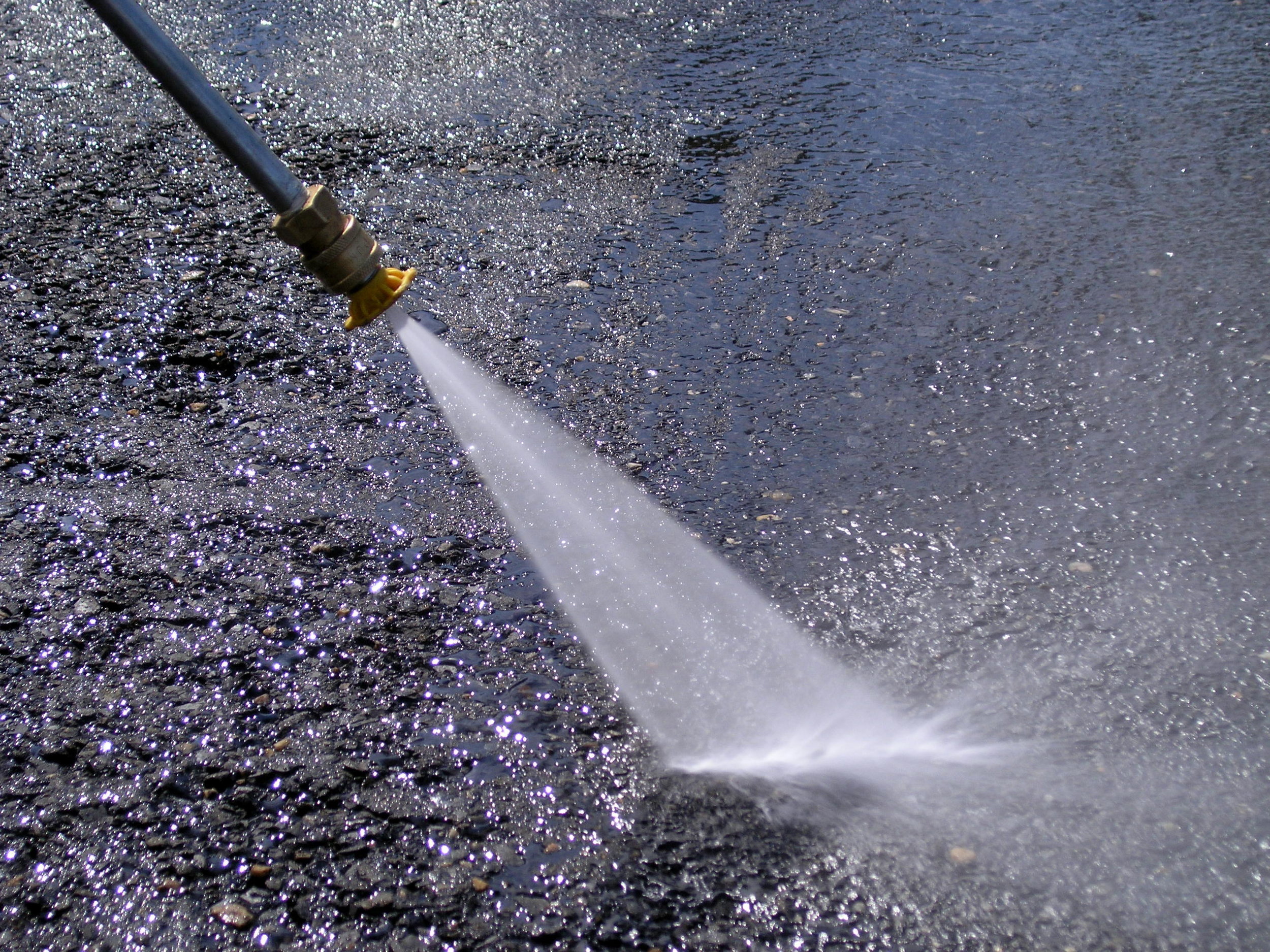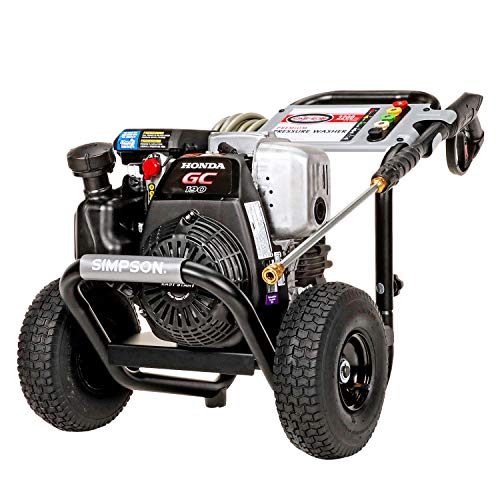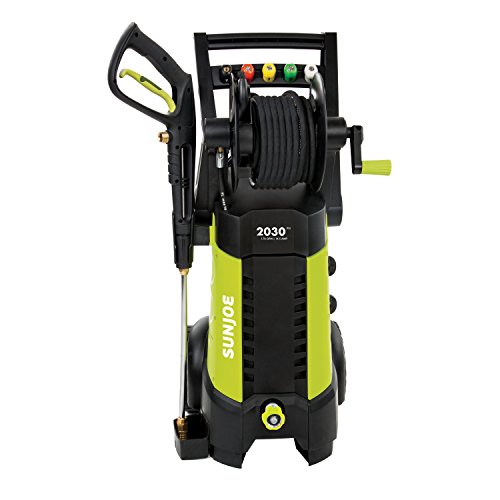The Best Pressure Washers for 2021
/Best Pressure Washer
Disclaimer: As an Amazon Associate I earn from qualifying purchases. There are affiliate links in this post. This means that at no cost to you, I will receive a commission if you purchase through my link. I will only ever promote the products and services that I trust and 100% recommend. You may read my full disclosure policy for more information. Thank you for supporting my business in this way.
Tackle any cleaning job using the power of water. From your car and boat to driveways, decks, walls, and gutters these versatile and powerful tools can do it all. To help you select which one is best for you, I have outlined the various features below along with a list of the best pressure washers currently available.
UPDATED: November 9, 2021.
MY TOP PICK:
If you are looking for the best overall, I recommend the Westinghouse WPX2700 because it provides a high-pressure stream of up to 2,700 PSI at 2.3 GPM, includes a soap tank for additional cleaning, and is equipped with a wheeled cart that makes it easy to move.
What is a pressure washer?
Pressure washers offer a fast and easy alternative to cleaning large areas such as house siding, wooden decks, and concrete paths. It is able to achieve this by greatly increasing the incoming water pressure of a standard garden hose to clean off dirt and debris.
How does a pressure washer work?
They are fairly simple pieces of equipment consisting of a motor, pump, and wand. The motor can be gas or plug-in powered (see more on this below). The water is provided via a garden hose that connects to one side of the pump. The motor powers the pump, pulling water in and delivering it at high pressure through the hose to a hand-held wand. The wand uses a trigger that turns the flow of water on and off. Interchangeable tips at the end of the wand provide a range of pressure options to customize to a particular job.
RELATED:
The Best Shop Vacs
The Best Leaf Blowers
If you are just getting started, check out this video for an overview of operating a standard pressure washer and some recommendations for all of the things it can help to clean:
Here of some features and components to be aware of when selecting a specific model:
Pressure and Volume
For each model, take note of the maximum water pressure measured in Pounds per Square Inch (PSI) and the maximum flow rate measured in Gallons Per Minute (GPM). The standard pressures range from around 2,000 to 3,200 PSI and the flow rates from 1.7 GPM up to 2.5 GPM.
There is typically a trade-off between power, cost, noise, and weight. Depending on your particular needs you may prefer to go with a model that is lightweight and lower-powered versus a heavier more expensive model if you are using it for small projects. However, if you need it for a range of demanding jobs you will probably want to select a model with a high PSI and GPM for maximum flexibility. It is much easier to remove pressure via nozzle attachments than it is to not have the additional pressure available.
Interchangeable Tips
The trigger on the wand does not control the pressure output, rather this is controlled by the tip of the wand. On most units, these tips are interchangeable and come in a range of spray angles. The narrower the spray angle the higher the resulting pressure. So when a model states its maximum PSI that is referring to the 0-degree nozzle attachment. This produces a needlepoint stream that is very powerful and concentrated. As a result, you should be very careful when using it as it can damage some surfaces. Always check on a sample material or obscure area before using it in all areas.
Other common angles include 15, 25, and 40 degrees which progressively reduce the PSI while simultaneously increasing the GPM. For example, a unit with a max pressure of 2,800 PSI at 0 degrees would have 2,600 PSI at 15 degrees with 2.2 GPM and 2,400 PSI at 15 degrees with 2.3 GPM.
There are also nozzles specifically designed to be used with soap since it should not be used with other nozzles as it can cause blockages.
Soap
Some models offer the ability to add soap into the pressurized water stream. This is done via a hose that injects soap into the water as it is exiting the pump. This can either be done by a soap hose placed in an external container or via an onboard soap tank. The advantage of the separate container is that it makes it easier to quickly switch been soaps but it can be a pain to move around. However, an onboard tank is easier to move but requires pouring out the current cleaning solution and replacing it with the next soap.
There is a range of soaps available designed to clean specific areas such as fencing, siding, concrete, cars, etc. As mentioned above, you should only use soap nozzles for this purpose.
Methods of Power
There are two common methods of powering these tools, by either gas or electricity. Battery-powered devices are beginning to become available, however, I have yet to see them perform at the level of these existing methods. Hopefully, in the coming years, it will get better as batteries offer a lot of advantages including reduced noise and portability.
Each method of power has its own advantages and disadvantages to keep in mind:
Electrically Powered (Plug-In)
Pros: Lightweight, runs as long as needed. Quieter than gas. Typically less maintenance.
Cons: Must be near a power source, range limited by the extension cord length. Lower PSI.
Gas Powered
Pros: Runs as long as there is a supply of gas available, range only limited by the garden hose length. High PSI.
Cons: Typically heavier, dealing with the maintenance of gas and oil, louder than other power options.
Maintenance
If you decide to go with a gas-powered model the maintenance requirements are very similar to that of a lawnmower. This includes providing lubrication when needed and topping off and/or changing the oil. One major difference is due to the water pump. If you live in an area that gets below freezing you must be sure the pump has been cleared of water to avoid ice building up and potentially causing damage. Follow the manufacturer’s instructions for the recommended procedure.
So here is my list of The Best Pressure Washers for 2021.
Enjoy!
Best Overall: Westinghouse WPX2700 Gas Powered Pressure Washer
The Westinghouse WPX2700 pressure washer includes three quick-change nozzle tips for a range of spray patterns to pair with the surface to be cleaned.
Provides a maximum pressure of up to 2,700 PSI at 2.3 GPM.
Features a soap line that allows the user to customize the cleaning agent depending on the specific application.
Features large 12" never-flat wheels that make it easy to move around.
Includes a 25-ft. abrasion-resistant hose.
Equipped with a foam grip handle for comfort when in use.
Best Electric Option: Sun Joe SPX3000 2,030 PSI Pressure Washer
The Sun Joe SPX3000 is powered by a 14.5 Amp motor which generates up to 2,030 PSI of water pressure and 1.76 GPM of water flow.
Equipped with a dual tank system that allows switching between different detergents with the selection dial.
Features a 34-inch extension spray wand and rear wheels provide easy maneuverability and access to hard-to-reach areas.
Offers the ability to tailor the pressure output of the spray to your cleaning needs with five quick spray nozzles.
Includes a 20-foot high-pressure hose.
Equipped with a 35-foot power cord.
Features TSS (Total Stop System) which automatically shuts off the pump when the trigger is not engaged.
Best High Pressure: SIMPSON MSH3125 3,200 PSI Electric Pressure Washer
The SIMPSON MSH3125 MegaShot features a lightweight design that makes it easy to move around.
Powered by a dependable and efficient HONDA GC190 engine.
Equipped with five quick-connect nozzles made from stainless steel.
Offers 3,200 PSI at 2.5 GPM.
Features an ergonomically designed spray gun handle for comfort.
Includes a 25 foot hose that is designed to be abrasion and kink resistant.
Best Value: Sun Joe SPX3001 2,030 PSI Electric Pressure Washer
The Sun Joe SPX3001 generates up to 2,030 PSI of water pressure and 1.76 GPM of water flow to help you tackle even the toughest cleaning jobs.
Equipped with a 34-inch extension spray wand for a range of applications.
Includes a large 40.6 fl oz (1.2-liter) onboard detergent tank.
Equipped with the TSS (Total Stop System) trigger that automatically shuts off the pump when the trigger is not engaged.
Includes quick-connect spray tips (0 Degree, 15 Degree, 25 Degree, 40 Degree, and Soap).
Features an onboard hose reel for quick and easy clean-up and storage.
Best Built-In Soap Tank: Ford 2,700 PSI Pressure Washer
The Ford 2,700 PSI Gas Powered Pressure Washer utilizes a high-performance 180 CC, 5.0 HP OHV four-stroke gasoline horizontal shaft engine.
Produces a maximum of 2,700 PSI at 2.3 GPM.
Includes four independent dispersion tips.
Equipped with an oversized chemical reservoir for additional cleaning.
Features 10-inch no-flat, foam-filled pneumatic wheels for easy moving.
Includes a fold-flat handle for easy transport and storage.
Best Premium Option: WEN PW31 3,100 PSI Gas Powered Pressure Washer
The WEN PW31 produces up to 3,100 PSI from the 208 cc 4-stroke OHV engine and pumps up to 2.5 gallons per minute.
Equipped with large 12-inch wheels for easy rolling and maneuvering.
Features quick-change connectivity simplifies the process of switching from nozzle to nozzle.
Includes 0°, 15°, 25°, and 40° nozzles to meet the needs of a variety of projects.
Features a 32 fluid ounce onboard soap tank to provide additional cleaning options.
Includes a 30-foot hose for flexibility while working.
Best Reach: Powerhouse International 3000 PSI Electric Pressure Washer
The Powerhouse International Platinum Edition includes a 30-foot hose and a 35-foot power cord for a combined 65-foot range when working.
Features a quiet electric motor that provides 3,000 PSI and 2.2 GPM.
Includes five quick-connect spray tips: 0º, 15º, 25º, 40º, and watering.
Comes with both a turbo and an angle nozzle.
Includes a soap foam sprayer and a spinning patio cleaning attachment.
Equipped with four casters to easily maneuver where needed.
Features a telescoping handle for easy moving.
Best Budget Option: Wholesun 3000 PSI Electric Pressure Washer
The Wholesun pressure washer is equipped with a powerful motor that generates up to 3000 PSI of pressure at 1.7 GPM.
Includes four nozzles for a range of applications.
Equipped with a soap bottle to add detergent to the spray.
Comes with a 20-foot high-pressure hose.
Includes a 33-foot power cord with GFCI.
Automatically shuts off the pump when the trigger is not engaged.
Best Compact Design: CRAFTSMAN CMEPW1700 Pressure Washer
The CRAFTSMAN CMEPW1700 features a max pressure of 1,700 PSI at 1.2 GPM.
Equipped with a soap applicator bottle for convenience.
Features onboard storage for the nozzle, hose, cord, and wand for easy access and organization.
Equipped with a 20-foot kink-resistant hose to provide flexibility and reduce the incidence of a reduced water flow.
Comes with a 35-foot power cord to allow for a large working radius.
I hope this list of the best pressure washers was helpful.
If you think I left out one that is important or have a suggestion for a future article, let me know in the comments below.
Brandon Hubbard, AIA, NCARB, LEED AP BD+C











